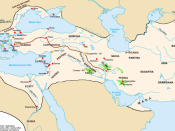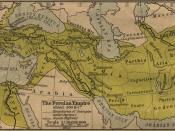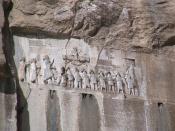INTRODUCTION
Zarathustra Spitama, the Zoroastrian faith's prophet, is one of the world's most progressive philosophers and most ancient religious thinkers. Despite his preeminence as a spiritual sage and the great influence he has exerted on subsequent worldviews and philosophers, very little is known about Zarathustra, particularly his time and place. There is no question that Zoroastrianism and Zarathustra himself are both very ancient, having come well before the time of Christ. But in trying to piece together the enigma that is Zarathustra's life, scholars are presented with numerous difficulties, namely a multitude of disparate accounts and a lack of adequate and reliable sources.
LINGUISTICS AND TEXTUAL SOURCES
The Avesta is the primary textual source for Zarathustra's teachings, and it is the first seventeen chapters, the Gathas, which provide us with the actual voice of Zarathustra. The Avesta is in two distinct forms of Avestan: "'Gathic' Avestan, which in its forms is close to the language of the Indian Rigveda (which is generally assigned to the second millennium B.C.);
and 'Younger' Avestan." The Gathas are the Avesta's oldest portion, and the rest of its "post-Gathic" composition consists of texts passed orally for generations until they were finally written down by the Sasanians. The early Iranians lacked written script and they attached a certain stigma to it. Thus, legends and religious texts were passed down orally. Examining parallels between the Avesta and the Rigveda (written in Vedic) certainly aid in trying to develop a rough estimate of the Gatha's date of composition.
It seems that Old Avestan and Vedic were in use at roughly the same time. The two languages do "share a fairly large inheritance of ancient words," although there are marked differences in the delineation (or lack thereof in the Rigveda) of social classes and other aspects of the texts.


